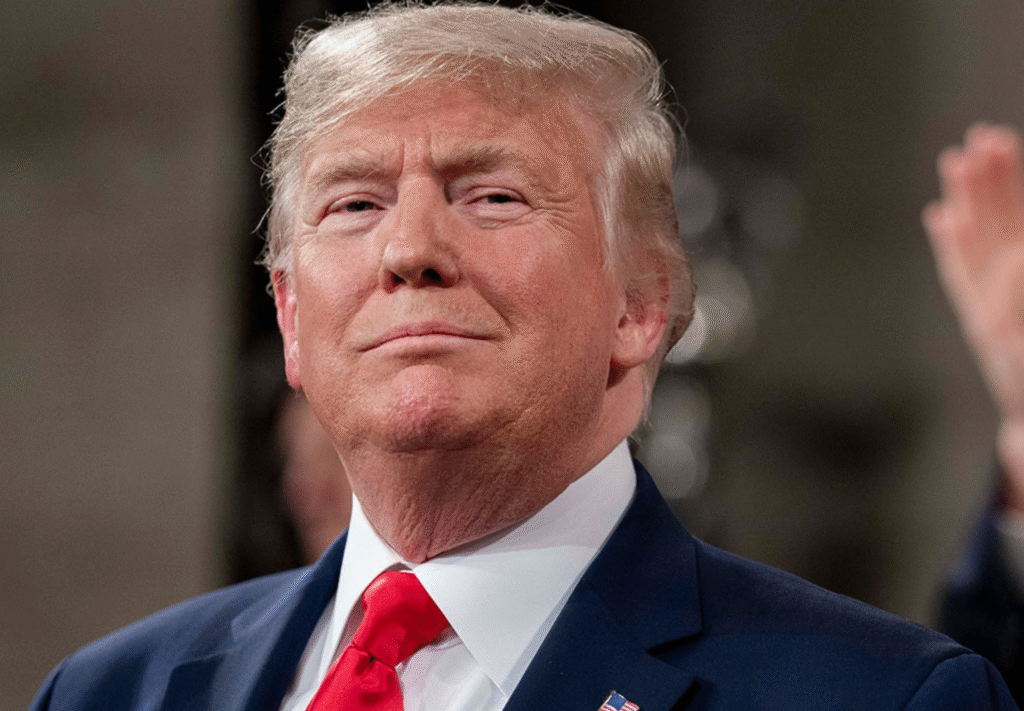World News
China’s draft measures demand ‘individual consent’ for facial recognition use on August 8, 2023 at 4:20 am
The pervasive use of facial recognition technology across all facets of life in China has elicited both praise for its convenience and backlash around privacy concerns. The widespread adoption has also fueled the exponential growth of valuations in companies specializing in the field, such as AI giants SenseTime and Megvii.
Now the industry is facing some potentially significant changes as Beijing steps up efforts to establish more defined boundaries for the technology’s usage. The move is building upon the implementation of major tech regulations that rolled out in recent years targeting cybersecurity, data security, and privacy protection.
On Tuesday, the Cyberspace Administration of China (CAC), the nation’s top internet watchdog, unveiled a series of proposed measures aimed at regulating the application of facial recognition. The technology has been extensively employed in both the public and private sectors, ranging from facial scans used to authenticate payments in supermarkets to identity verification procedures at airport boarding gates — the latter an increasingly common practice not only in China but also across the U.S.
Critics have raised concerns over privacy and bias over the use of facial recognition. They complain that some residential compounds have made facial scans the only way of accessing buildings. There are also concerns about the accuracy and fairness of algorithms, particularly in recognizing the faces of minorities, which could lead to the unjust targeting of certain groups.
The proposed measures appear to provide individuals with more rights to opt out of facial recognition in specific circumstances — but they come with limitations.
The utilization of facial recognition should be limited to “specific purposes and full necessity,” requiring individual approval or written consent, according to the draft measures.
The rules emphasize the need for clear signage in public areas where facial recognition is employed. Venues such as hotels, airports, and museums are prohibited from coercing individuals into accepting facial scans for such reasons as “business operations” or “service enhancements”. Moreover, facial recognition should not serve as the sole means of access to a building.
When it comes to collecting facial biometric data from individuals under the age of 14, the consent of their parents or legal guardians must be obtained.
Organizations and individuals will bear higher operational costs for using the technology. Entities in possession of facial data on more than 10,000 individuals must register with a local branch of the CAC. The filing needs to explain the purpose of collecting such data and plans for data protection. Unless authorized by individuals, collectors are prohibited from retaining facial images in their original resolution.
The proposed measures, If effectively enforced, hold the potential to enhance security within an industry that has been relatively loosely regulated so far and lower the risk of data mishandling. China has seen several major biometric data breaches in recent years, compromising the sensitive information of millions of people.
The country has also drawn fire for deploying facial recognition systems to identify people’s ethnicities, particularly in the case of Uyghurs; but that won’t change with the new rules. According to the proposed measures, any organization or individual should refrain from utilizing facial recognition technology to create profiles based on race, ethnic group, religion, health, social class, or other sensitive information, unless it’s deemed necessary for reasons including national security and public security.
The proposal is seeking public opinions until September 7.
The pervasive use of facial recognition technology across all facets of life in China has elicited both praise for its convenience and backlash around privacy concerns. The widespread adoption has also fueled the exponential growth of valuations in companies specializing in the field, such as AI giants SenseTime and Megvii. Now the industry is facing
News
US May Completely Cut Income Tax Due to Tariff Revenue

President Donald Trump says the United States might one day get rid of federal income tax because of money the government collects from tariffs on imported goods. Tariffs are extra taxes the U.S. puts on products that come from other countries.

What Trump Is Saying
Trump has said that tariff money could become so large that it might allow the government to cut income taxes “almost completely.” He has also talked about possibly phasing out income tax over the next few years if tariff money keeps going up.
How Taxes Work Now
Right now, the federal government gets much more money from income taxes than from tariffs. Income taxes bring in trillions of dollars each year, while tariffs bring in only a small part of that total. Because of this gap, experts say tariffs would need to grow by many times to replace income tax money.
Questions From Experts
Many economists and tax experts doubt that tariffs alone could pay for the whole federal budget. They warn that very high tariffs could make many imported goods more expensive for shoppers in the United States. This could hit lower- and middle‑income families hardest, because they spend a big share of their money on everyday items.
What Congress Must Do
The president can change some tariffs, but only Congress can change or end the federal income tax. That means any real plan to remove income tax would need new laws passed by both the House of Representatives and the Senate. So far, there is no detailed law or full budget plan on this idea.

What It Means Right Now
For now, Trump’s comments are a proposal, not a change in the law. People and businesses still have to pay federal income tax under the current rules. The debate over using tariffs instead of income taxes is likely to continue among lawmakers, experts, and voters.
News
Epstein Files to Be Declassified After Trump Order

Former President Donald Trump has signed an executive order directing federal agencies to declassify all government files related to Jeffrey Epstein, the disgraced financier whose death in 2019 continues to fuel controversy and speculation.
The order, signed Wednesday at Trump’s Mar-a-Lago estate, instructs the FBI, Department of Justice, and intelligence agencies to release documents detailing Epstein’s network, finances, and alleged connections to high-profile figures. Trump described the move as “a step toward transparency and public trust,” promising that no names would be shielded from scrutiny.
“This information belongs to the American people,” Trump said in a televised statement. “For too long, powerful interests have tried to bury the truth. That ends now.”
U.S. intelligence officials confirmed that preparations for the release are already underway. According to sources familiar with the process, the first batch of documents is expected to be made public within the next 30 days, with additional releases scheduled over several months.
Reactions poured in across the political spectrum. Supporters praised the decision as a bold act of accountability, while critics alleged it was politically motivated, timed to draw attention during a volatile election season. Civil rights advocates, meanwhile, emphasized caution, warning that some records could expose private victims or ongoing legal matters.
The Epstein case, which implicated figures in politics, business, and entertainment, remains one of the most talked-about scandals of the past decade. Epstein’s connections to influential individuals—including politicians, royals, and executives—have long sparked speculation about the extent of his operations and who may have been involved.

Former federal prosecutor Lauren Fields said the release could mark a turning point in public discourse surrounding government transparency. “Regardless of political stance, this declassification has the potential to reshape how Americans view power and accountability,” Fields noted.
Officials say redactions may still occur to protect sensitive intelligence or personal information, but the intent is a near-complete disclosure. For years, critics of the government’s handling of Epstein’s case have accused agencies of concealing evidence or shielding elites from exposure. Trump’s order promises to change that narrative.
As anticipation builds, journalists, legal analysts, and online commentators are preparing for what could be one of the most consequential information releases in recent history.
Politics
Netanyahu’s UN Speech Triggers Diplomatic Walkouts and Mass Protests

What Happened at the United Nations
On Friday, Israeli Prime Minister Benjamin Netanyahu addressed the United Nations General Assembly in New York City, defending Israel’s ongoing military operations in Gaza. As he spoke, more than 100 delegates from over 50 countries stood up and left the chamber—a rare and significant diplomatic walkout. Outside the UN, thousands of protesters gathered to voice opposition to Netanyahu’s policies and call for accountability, including some who labeled him a war criminal. The protest included activists from Palestinian and Jewish groups, along with international allies.

Why Did Delegates and Protesters Walk Out?
The walkouts and protests were a response to Israel’s continued offensive in Gaza, which has resulted in widespread destruction and a significant humanitarian crisis. Many countries and individuals have accused Israel of excessive use of force, and some international prosecutors have suggested Netanyahu should face investigation by the International Criminal Court for war crimes, including claims that starvation was used as a weapon against civilians. At the same time, a record number of nations—over 150—recently recognized the State of Palestine, leaving the United States as the only permanent UN Security Council member not to join them.
International Reaction and Significance
The diplomatic walkouts and street protests demonstrate increasing global concern over the situation in Gaza and growing support for Palestinian statehood. Several world leaders, including Colombia’s President Gustavo Petro, showed visible solidarity with protesters. Petro called for international intervention and, controversially, for US troops not to follow orders he viewed as supporting ongoing conflict. The US later revoked Petro’s visa over his role in the protests, which he argued was evidence of a declining respect for international law.

Why Is This News Important?
The Gaza conflict is one of the world’s most contentious and closely-watched issues. It has drawn strong feelings and differing opinions from governments, activists, and ordinary people worldwide. The United Nations, as an international organization focused on peace and human rights, is a key arena for these debates. The events surrounding Netanyahu’s speech show that many nations and voices are urging new action—from recognition of Palestinian rights to calls for sanctions against Israel—while discussion and disagreement over the best path forward continue.
This episode at the UN highlights how international diplomacy, public protests, and official policy are all intersecting in real time as the search for solutions to the Israeli-Palestinian conflict remains urgent and unresolved.

 Entertainment4 days ago
Entertainment4 days agoWicked Sequel Disappoints Fans: Audience Verdict on For Good

 Entertainment3 weeks ago
Entertainment3 weeks agoAfter Party: Festival Winner for Best Romantic Short

 News3 weeks ago
News3 weeks agoCamp Wackapoo – Rise of Glog Takes Center Stage

 Entertainment3 weeks ago
Entertainment3 weeks agoFrancisco Ramos Takes Top Mockumentary Award at Houston Comedy Film Festival

 News2 weeks ago
News2 weeks agoYolanda Adams Questions Traditional Views on God’s Gender, Audience Reacts

 Politics3 weeks ago
Politics3 weeks agoTrump’s $2,000 Tariff Dividend Plan: Who Gets Paid?

 Politics4 weeks ago
Politics4 weeks agoMamdani’s Victory Triggers Nationwide Concern Over New York’s Future

 Film Production3 weeks ago
Film Production3 weeks agoWhy China’s 2-Minute Micro Dramas Are Poised To Take Over The U.S.



























